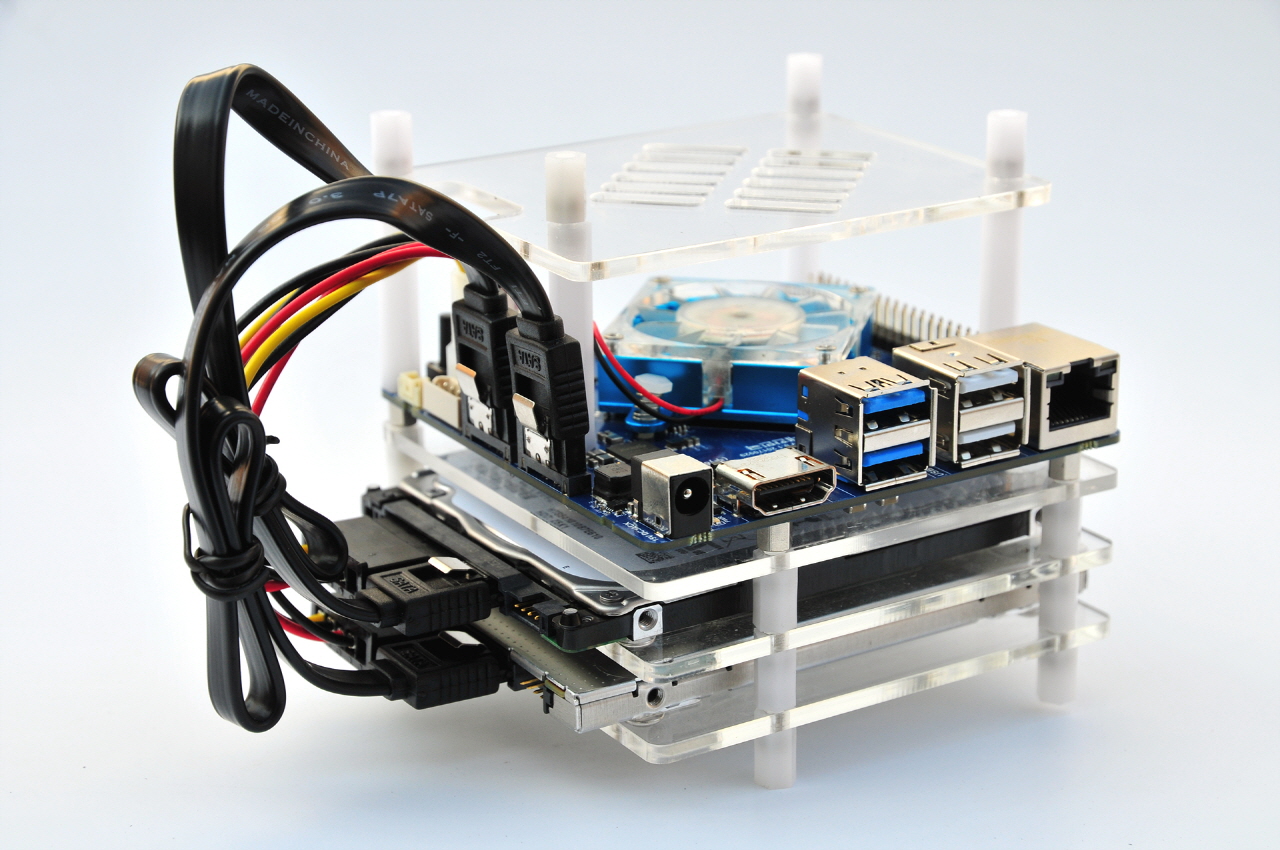I guess he used whatever manufacturer default image is.
Is that TinkerOS V2.0.5 from 2 days ago being used for Tinker Board, i don't t(h)ink so
Is that TinkerOS V2.0.5 from 2 days ago being used for Tinker Board, i don't t(h)ink so

Version 2.0.5 2018/03/20 992.27 MBytes TinkerOS_Debian V2.0.5
TinkerOS_Debian V2.0.5
Release Notes
*Changelog
1. Support Adafruit 3.5" TFT Touchscreen.
2. Pre-install GPIO libraries foy C, Python and Scratch.
3. Change U-Boot debug port from UART1 to UART3.
4. Improved the Kinect support.
5. Fix chromium 61 version enable gpu failure issue.
6. Add remote controller with lirc.
7. Add HDMI CEC protoctol handling (Tinker Board S)
8. Set the CPU minimum freq at 600 MHz
9. Improved GPIO interface initialization script
10. Improved the tinker-config permission.
11. Update RK packages to fix bug for playing video 1920x1072 hevc
12. Enable SND_ALOOP and SND_DUMMY as kernel module.
13. Improved Xorg performance when dragging windows
14. Enable TASKSTATS, TASK_DELAY_ACCT, TASK_XACCT and TASK_IO_ACCOUNTING to support iotop tool
15. Fix video layer over other layers
16. Disable HDMI audio when audio HAT is used.
17. Enable USB_SERIAL_CH341
18. Use Device Tree for DSI Touchscreen
19. Improved the UMS mode detection
20. Support Add w1_therm for DS18B20 and set the default w1-gpio's pin to GPIO 17 (GPIO0 C1).
21. Support the old v1.0 spec of MIPI-DSI Touchscreen Display.
22. Support RTC DS1307.
23. Support IR receiver (TOSHIBA G83C0004D310).
24. Improved the XBOX Controllers support
25. Support USB LTE module (MEIG SLM750)
26. Support ReSpeaker 2-Mics Pi HAT
27. Support JustBoom DAC
28. Support JustBoom Amp
29. Support JustBoom Digi HAT (Tinker Board S)
30. Support IQAudio Pi-DAC
31. Support IQAudio Pi-Digi+ (Tinker Board S)
32. Support HiFiBerry Digi+ Standard (Tinker Board S)
33. Support HiFiBerry Digi+ Pro (Tinker Board S)
*Tinker CLI and GUI's Configuration Tools (Experimental):
1. Fix change locale error of GUI version
2. Add custom resolution setting interface on GUI
3. Change UART log port from UART1 to UART3
4. Fix change passwd fail
5. Fix keyboard layout setting fail
MD5:
4ff4791c00f27717e6781ef02903f089 (zip)
f2f537deab470c188624f68714443ff8 (img)
TinkerOS_Debian V2.0.5
Release Notes
*Changelog
1. Support Adafruit 3.5" TFT Touchscreen.
2. Pre-install GPIO libraries foy C, Python and Scratch.
3. Change U-Boot debug port from UART1 to UART3.
4. Improved the Kinect support.
5. Fix chromium 61 version enable gpu failure issue.
6. Add remote controller with lirc.
7. Add HDMI CEC protoctol handling (Tinker Board S)
8. Set the CPU minimum freq at 600 MHz
9. Improved GPIO interface initialization script
10. Improved the tinker-config permission.
11. Update RK packages to fix bug for playing video 1920x1072 hevc
12. Enable SND_ALOOP and SND_DUMMY as kernel module.
13. Improved Xorg performance when dragging windows
14. Enable TASKSTATS, TASK_DELAY_ACCT, TASK_XACCT and TASK_IO_ACCOUNTING to support iotop tool
15. Fix video layer over other layers
16. Disable HDMI audio when audio HAT is used.
17. Enable USB_SERIAL_CH341
18. Use Device Tree for DSI Touchscreen
19. Improved the UMS mode detection
20. Support Add w1_therm for DS18B20 and set the default w1-gpio's pin to GPIO 17 (GPIO0 C1).
21. Support the old v1.0 spec of MIPI-DSI Touchscreen Display.
22. Support RTC DS1307.
23. Support IR receiver (TOSHIBA G83C0004D310).
24. Improved the XBOX Controllers support
25. Support USB LTE module (MEIG SLM750)
26. Support ReSpeaker 2-Mics Pi HAT
27. Support JustBoom DAC
28. Support JustBoom Amp
29. Support JustBoom Digi HAT (Tinker Board S)
30. Support IQAudio Pi-DAC
31. Support IQAudio Pi-Digi+ (Tinker Board S)
32. Support HiFiBerry Digi+ Standard (Tinker Board S)
33. Support HiFiBerry Digi+ Pro (Tinker Board S)
*Tinker CLI and GUI's Configuration Tools (Experimental):
1. Fix change locale error of GUI version
2. Add custom resolution setting interface on GUI
3. Change UART log port from UART1 to UART3
4. Fix change passwd fail
5. Fix keyboard layout setting fail
MD5:
4ff4791c00f27717e6781ef02903f089 (zip)
f2f537deab470c188624f68714443ff8 (img)




.png)


Comment